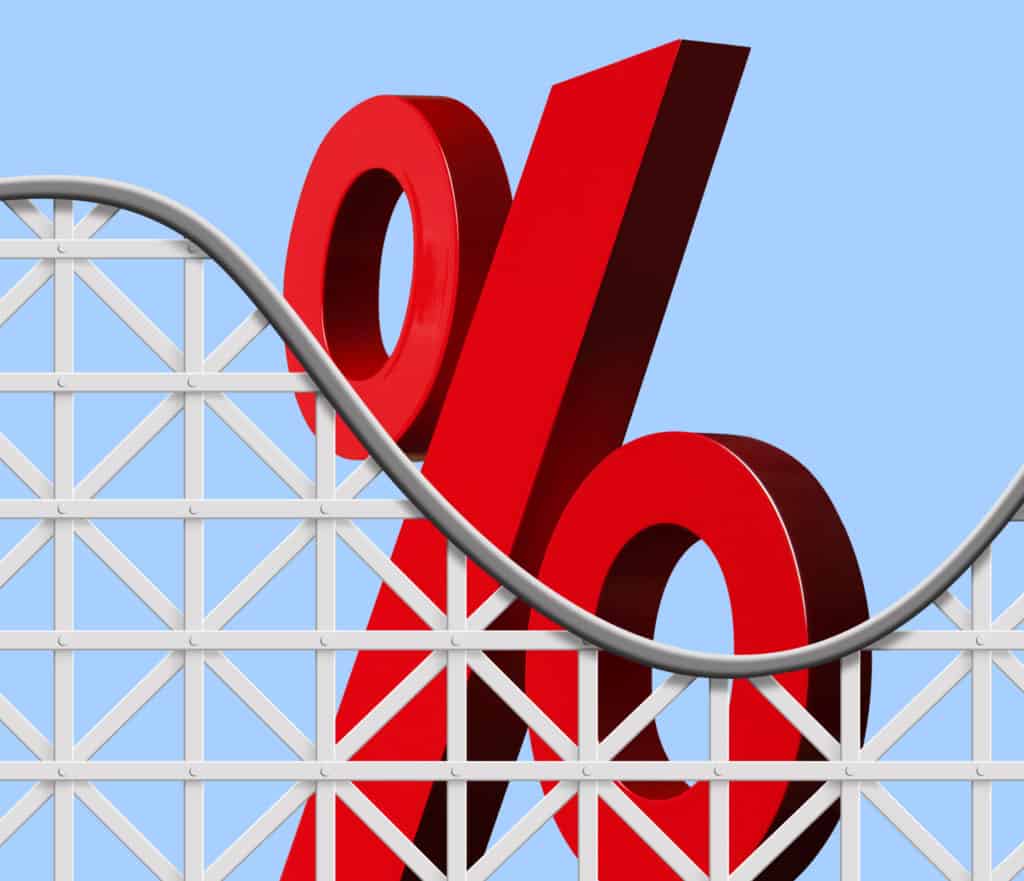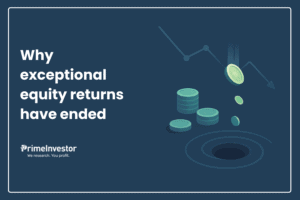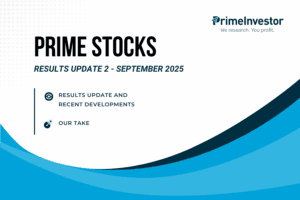It’s not just equity that can see a rapid change in returns. Debt returns can change, too. A month ago, 1-year returns for gilt funds were above 11%. By end August, 1-year returns stood at 8%. And this fall wasn’t restricted to just gilt funds. Dynamic bond funds and banking & PSU funds too had similar falls in returns.
So why were debt fund returns falling and what should you do? This is the question we’ve received from many of you. The straight answer to this is: gilt yields rose sharply in the past 1 month causing a drop in prices. And this move was not just in the 10-year bonds. Even 3- and 5-year government bonds moved up by over 50 basis points in a matter of a month.
However, a range of measures from the RBI on August 31, to counter this sharp move, sent yields back lower – closer to month-ago levels. You will therefore see an improvement in your debt fund returns. Should you be worried about your gilt fund or dynamic bond fund returns and what is the way forward?
The rise in return
The rolling 1-year return for gilt funds rose over 10% sometime in mid-2019. The big returns came from a rally in bond prices as interest rates fell. Between 2019 and now, policy rates crashed from 6.5% to 4%, with low inflation rates providing room for the RBI to make rate cuts and also spur growth.
The graph below shows the movement of the 10-year Nifty G-Sec index from October 2018 to date. As you can see, the index has been gradually trending higher, though there is a fair bit of fluctuation. 10-year gilt yields fell from about 7.3-7.5% at the start of 2019 all the way down to 5.76 in July 2020.
As long-term gilts are most sensitive to rate movements and also the most liquid, the impact of rate changes is felt the most here. Gilt funds saw returns soar the most. 1-year returns for gilt funds were 15-17% as recently as May and have been in the double digits from mid-2019.
- Dynamic bond funds switch strategies based on the rate cycle. Their move into gilts as the opportunity opened up sent their returns near 10% as well.
- Next to gilts, AAA corporate bonds and PSU bonds also reflect rate changes. This helped push returns of banking & PSU funds, corporate bond funds, and some medium duration funds. Not just that, some funds took small gilt exposures to drive returns.
The recent fall
But in August, gilt yields moved up swiftly. Through August, the 10-year yield rose past 6%, hitting 6.2% before falling back now.

- A key factor for the yield up move was the Reserve Bank’s pause on rate cuts after running a series of cuts, on the backs of rising inflation and uncertainty surrounding its trajectory. Supply-side constraints due to both the national and various local lockdowns sent food inflation up while fuel inflation too remained high.
- Given the extent of the cuts already made and the inflation discomfort, the quantum of rate cuts was expected to be limited even though the RBI retained its accommodative stance.
- Government borrowings was (and continues to be) another factor that markets had to contend with, on concerns of oversupply, fiscal deficits and inflationary impact.
- The RBI has moved to using open market operations to try and manage yields, including steps taken yesterday to conduct more purchases/selling/ auctions of bonds, allowing banks to use lower-rate repo auctions to refinance purchases made in higher-rate auctions and so on. These moves can also keep yields rangebound.
Impact on debt returns
It is this rise in yields, therefore, that briefly sent debt fund returns down in August. Of the categories impacted more by bond yield moves, gilts fared the worst, obviously. In the 1-month period, the average loss in gilt funds was 1.7%, and the funds are loss-making even on a 3-month basis. Dynamic bond funds came in next, clocking in losses above 1% on a 1-month basis.
Banking & PSU debt funds slipped too, but to far lesser extent, with average losses at less than 0.5%, though some have fallen more on an individual fund basis. However, these funds are primarily accrual-based and use bond rallies only tactically to kick up returns. Other debt fund categories have seen minimal impact of yield changes.
The graph below shows how the 1-month returns of gilt, dynamic bond, and banking & PSU fund categories have moved since April this year.
What the rate and return cycles teach you
Returns can be volatile: Gilt instrument prices react to rate changes. Gilt funds’ returns will fluctuate. The zero credit risk in gilt (or low credit risk in PSU and AAA bonds) does not equate zero risk in returns. Shorter the period, higher the risk of losses. Considering the 2012-2020 period, the gilt category dipped into losses 25% of the time based on 1-month returns.
Debt fund returns normalise over time: High 1-year returns do not last. These returns come in one phase of a rate cycle and as the cycle turns, the gains will normalise. In the 2012-2020 period, 1-year returns came in 9% more than half the time. However, 5-year returns usually tended to be within 7-9%. Holding over the years and interest rate cycles, therefore, evens out returns.
What’s the scenario now?
The RBI has come out with a slew of measures to contain the sharp rise in yield. Notable among them is upping the held to maturity (where banks need not provide for mark-to-market losses) proportion of bonds that banks can hold.
This along with other measures can be expected to (already is) reverse the damage caused by the recent yield spike. This can even provide a relief rally, which looks under way. Having said this, the reasons why bond yields spiked in the first place, remain. And to this extent making any rally predictions and taking positions at this stage would be unwise in our view.
What should you do?
So what now, if you have invested in gilt funds or funds with medium duration? At this time, there is still uncertainty over where yields and rates are headed.
In gilt funds
We have held that if your investing time frame in gilt is not less than 5 years, you have nothing to worry about. This 5-year time frame is not to make high returns but for allowing volatility to reduce and returns to normalise. Please note that our long-term portfolios are not meant for timing gilt.
But here are some tips you could use right now:
- If you just started investing in gilt funds (with a 5-year view) and see that you are in losses, stick to your plan. You may get more buying opportunities over the next year or two. This is true of all our Prime Portfolios that have gilt in them.
- If you have already been investing for 1-2 years now and don’t need the amount for the next 3-5 years, continue to hold and know that dips, as seen recently, are par for the course. If you are not running SIPs, you can even invest more on dips, if they come by.
- If your requirement is less than 2 years from now, you’ll likely see your returns once again improving in the course of the next few weeks. Use these opportunities to slowly exit and lock into gains. You can reinvest the proceeds in fixed deposits or in liquid/very short categories in Prime Funds.
In dynamic bond funds
Fund managers are expected to manage duration based on the rate cycle in this category. Hence, stick to your plan and simply use our MF Review Tool first to check whether you are with quality funds. The reason is that there may be underlying credit risks or the fund may be inconsistent in its ability to manage different rate cycles. Here again, know that these funds need a minimum 3-year view. If you entered for shorter time frames, you might as well exit as explained above in the gilt fund section.
If you are averse to exiting due to taxation or otherwise (for gilt and dynamic bonds), you can consider re-assigning these funds to longer-term goals. If you have funds from shorter duration categories use them to meet any short-term needs.
In banking & PSU debt funds
If you have recently invested in the fund, you can continue holding it. The recent dip will pull back as the interest accrual on the bonds will normalise returns. Know that the primary strategy in these funds is not to time rate cycles. The same holds for corporate bond funds that have seen returns come off the high numbers.
Predicting where the rate cycle will go is not just difficult but also not really necessary for an individual investor. Market yields also do not follow only the RBI’s actions and cues, but react to factors ranging from government borrowing to foreign institutional flows to inflation to GDP growth to exchange rates.
The safest rule to follow in debt and to circumvent rate cycle vagaries and avoid timing missteps is to align your time-frame correctly with the nature of fund. We have covered this aspect in a category-specific article and in another one on debt fund risks.
Please note that we are not predicting a rate hike at this stage. All we are letting you know is that the period of free returns from duration may start winding up. While the current fall is already on its way to be reversed, there needs a lot more trigger for bonds to rally. To this extent, you will likely be in a waiting room – between a rate fall phase and a rate hike phase.







24 thoughts on “Gilt fund returns are falling. Why, and what should you do?”
The market was looking for 2 triggers, rather wish lists – increase in the Held to Maturity portion and a monetisation plan from the RBI on managing the excess borrowing. The first has been granted and now the punt is on the second, especially given state/ centre discord over GST compensation.
Whenever (Or, if & when) the RBI comes out with a monetisation plan, we may see a rally and that should be trigger to exit gilt.
What’s your take ?
Interesting. But the monetization plan could take time and meanwhile yields could rise. I think given the current risk off sentiment in Indian and global equity markets, long duration bonds will also sell off. I think it would make sense to enter gilt funds when rates rise to 6.3-6.5%. But even otherwise it makes sense to stay in liquid funds for now. Equities are extremely overvalued. So if equity markets correct another 10-20%, you have can consider allocating to equities. So, staying in liquid funds for another 3 months, until US elections finish, I think makes sense. There will be ample opportunities to deploy in risk assets.
I have been going through many articles on debt funds. This is the best yet!
Does a 10 yr constant maturity fund make sense for a long term investment with SWP for a regularincome after 3 yrs?
Hello sir,
We’ve covered SWPs and the kind of funds suitable for it here. You could invest some part of your SWP corpus in gilts if you really wanted to, but start doing any withdrawal after 5 years.
Thanks,
Bhavana
Thanks, Bhavana for the revert.
Just joined Prime Investor recently. Kind of liking it !!
Thanks!
Regards,
Bhavana
Thank you for re assuring us that one can look at Gilt, Banking PSU and corporate bonds if invested for the long term.. To use dips as a buying Opportunity is great, Thanks, Praveen
Thanks!
Excellent and timely article to articulate to take the decision on Gilt funds. Keep it up!!
Thanks, sir!
Regards,
Bhavana
That’s quite insightful into the dynamics of debt funds under different market conditions. Thanks Bhavna madam.
Thanks, sir!
Regards,
Bhavana
Considering the credit risk and interest rate risk associated with PSU funds, corporate bonds and medium duration funds, what’s the value add they give that a good ultra short fund doesnt give both in short and long term. In other words why should a retail investor look beyond liquid and UST funds in debt categories?
Hello sir,
In a sense, yes, you could. The thing is you will be compromising on yields. Liquid can get very, very low in returns (as we’re seeing now) and so can ultra-short & similar type funds. So when you do this for very long time-frames, it can lead to bigger opportunity loss. If you’re good with this, then you can stick to these funds alone.
But otherwise, you can go for longer-duration funds. Your logic is absolutely sound – so, you can still use short-duration funds or say, banking & PSU funds even if your timeframe is 10+ years. This will give you better returns, and still with lower risk, than just liquid/ultra short. You don’t need gilt or dynamic bond or medium duration etc.
In Prime Funds – and anything we write on debt funds – we have therefore always given only the minimum timeframe needed. You can hold for any number of years beyond the minimum. We’ll consider actually expanding and explaining the point you have made here 🙂
Regards,
Bhavana
This is real confusion to choose between Liquid fund vs ( banking & PSU funds , Corp bond funds) for my long term goals.. Firstly i do not understand the how banking & PSU funds deals with interest rate risk. So i thought of sticking with liquid funds in terms of less risk but settle with low returns 🙁
My financial planner suggested only Liquid funds for any long term goals.
Hello sir,
You can read our article on debt fund categories to clear the confusion on what to use. But that aside, if you’re aware that returns will be lower in liquid funds and you are fine with it, you can certainly use them for your long-term goals.
Thanks,
Bhavana
Thank you Madam.
I subscribed Prime Investor in March & invested- switched previous funds according to your 7 years Prime Portfolio.This article built my confidence in continuation of these investments.
Thanks, sir!
Regards,
Bhavana
Thanks for this article. I use dynamic bond and credit risk bond funds for my retirement savings and this helped me to concretize my strategy.
Thanks, sir!
Regards,
Bhavana
Thanks for detailed report.. Very much useful information..
Thanks, sir!
Regards,
Bhavana
Hi
I have some surplus cash of few Lacs. FD return are quite low and I have already good exposure with debt funds, such Banking&PSU fund, corporate bond, dynamic bond fund, liquid fund etc. Please suggest me where to park . I am not in need for another 5 years or even beyond that. I have already exhausted senior citizen savings scheme etc. LIC pension scheme – I am little hesitant. Can you suggest suitable debt fund
I am member of prime Investor
Regards
Sankar N
Hello sir,
Can you please raise this as a ticket from here: https://www.primeinvestor.in/contact-us/? We’d like to address product-specific queries through our support system for better tracking.
Thanks,
Bhavana
Comments are closed.